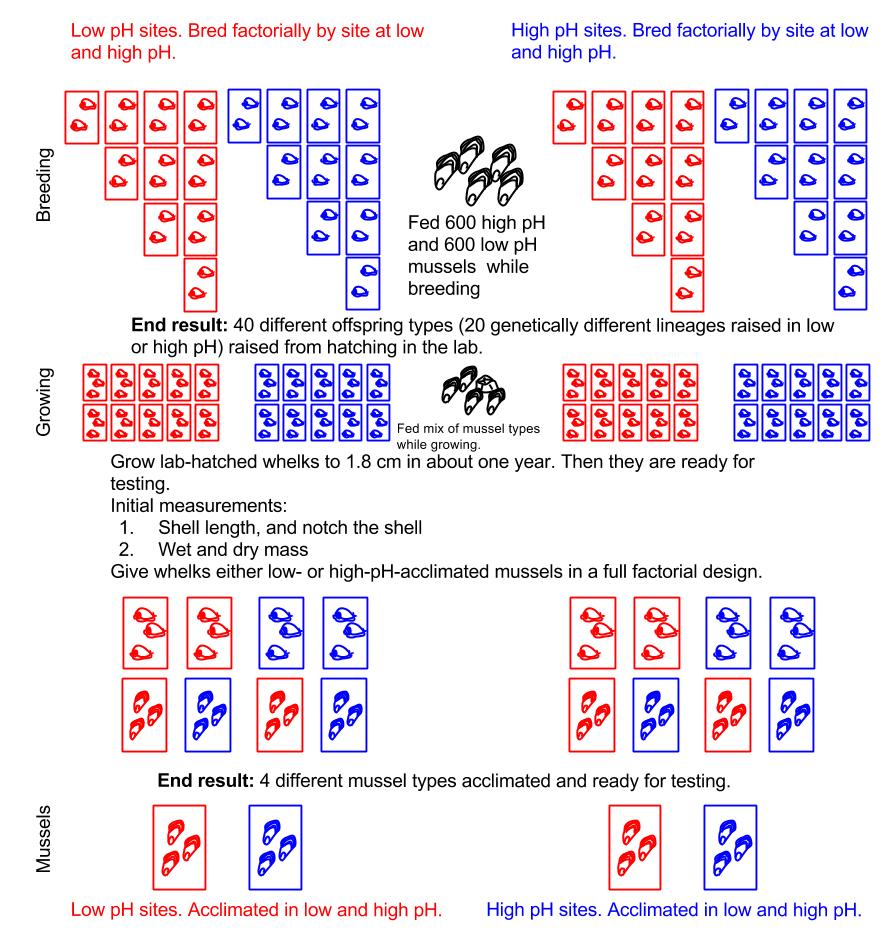About a month ago, I put some whelks in a tank of flowing seawater and gave them a hundred mussels.
The water level was a bit high, so I set up some slightly precarious way to siphon it out of one hose as it entered from another hose, and then I promptly forgot about it.
I took my comprehensive exam, applied for the
NSF grant, and visited Oregon, and when I came back to Santa Cruz, I knew I'd have to deal with whatever nonsense was going on in that tank. Since I wasn't doing any actual experiments, I didn't care too much if when I finally checked on it again the hoses were out of place, the tank empty, and it reeked of decaying snails and mussels (i.e. if they were all dead).
So one not-too-rainy afternoon last week, I meandered into the dungeon-like RC wet lab #1, inhaled the familiar musty organic smell that comes with a shared biological research space (regrettably, I am getting used to this smell--I don't like the idea of offensive odors becoming a normal part of my life), switched on the lights and was pleased to find that my tank was still flowing with seawater just as I had left it. The mussels had moved, and they were alive! But when I looked for the whelks, I didn't see any.
Since it didn't reek of decaying snails, I figured there were still in there somewhere out of view. I emptied the tank, tried with difficulty to rinse out much of the silty particles that I could only assume were whelk and mussel poop, and picked through the mussels in search of whelks. Sure enough, I found at least a dozen under and in the mussel matrix. There was the familiar brown-striped one, the black ones, and the big pearl-colored one (my favorite. It has purple undertones).
The whelks as of December 1, 2014.
After rummaging through the matrix some more, I found a whole bunch of empty mussel shells with tiny holes in them--obvious signs of whelk predation. I've been dying to collect some data, so I decided to gather all these empty shells with holes in them and measure them (length, width, dry mass, hole diameter, etc.).
Check out that hole right in the middle of mussel #17.
(Click
here to learn the dot tally method.)
Then, after rummaging even more, I found the most exciting thing: whelk egg capsules! All this time I thought I was irresponsibly neglecting the whelks, I was actually giving them privacy to mate. Now I'm excited to see if I get whelk babies in three months. I just have to find mussels small enough to feed them, because they start feeding exogenously just two days after hatching!
These are whelk capsules: beige-colored, vase-shaped gelatinous "cups" that contain not only a dozen or so whelk embryos but also hundreds of nurse eggs. The nurse eggs are food for the embryos as they develop into juveniles inside the capsule. Then they emerge as 1 mm baby whelks and crawl away to live in the real world--or in this case, in my tank.
Now that I have this awesomeness going on, I'll promptly forget about it for another few months and see if the babies hatch! If only kitties and puppies were this easy to raise. One more reason to study invertebrates.







.jpg)
.jpg)
.jpg)

.jpg)

.jpg)
